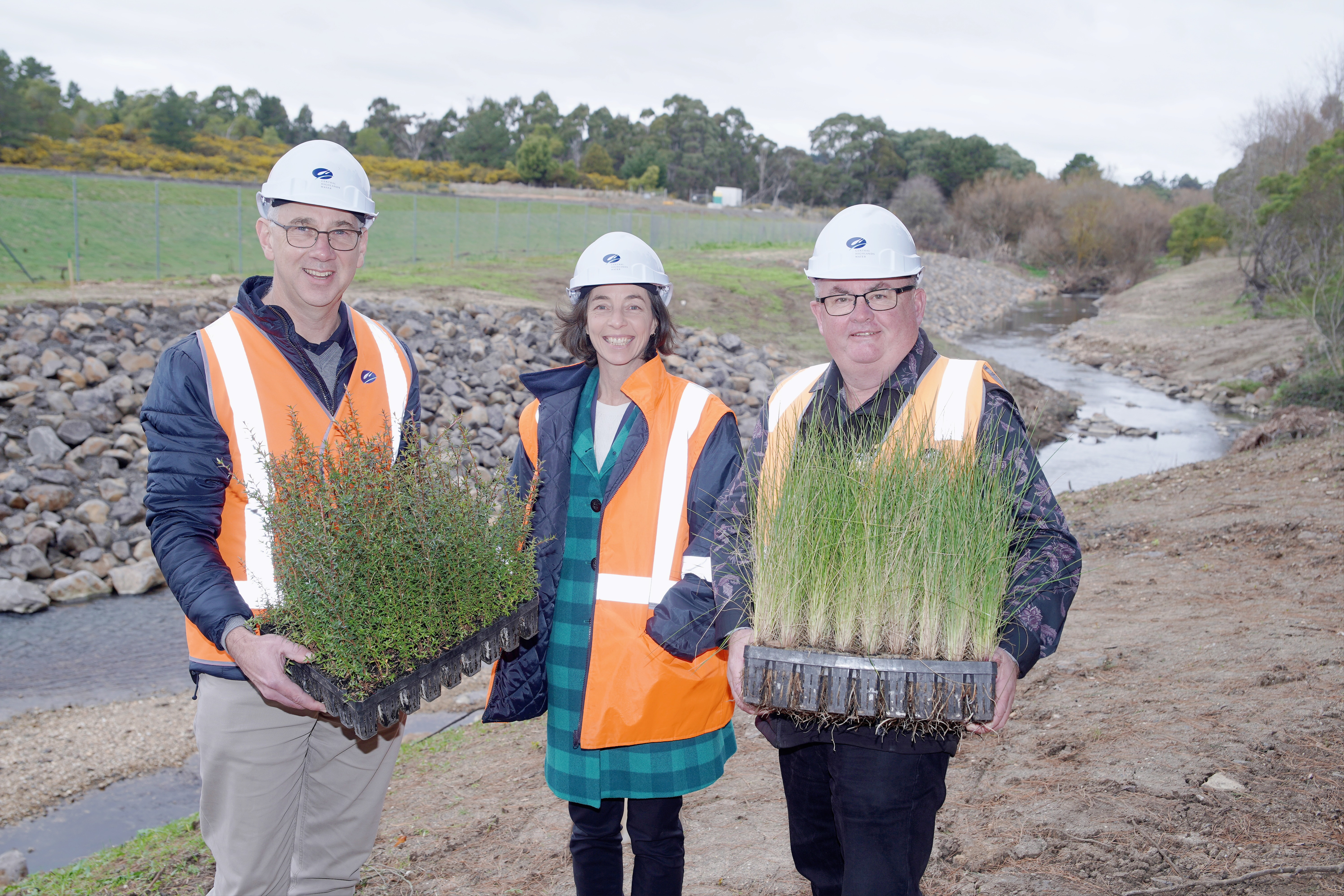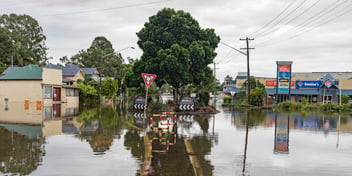Rehabilitation works breathe new life into Ballarat waterway

With a legacy of environmental degradation from once being a gold mining resource, Ballarat’s Yarrowee River has recently undergone structural and vegetative rehabilitation works to help stabilise the riverbank and enhance biodiversity along the waterway.
Delivered in partnership by Central Highlands Water (CHW), City of Ballarat (CoB) and Wadawurrung Traditional Owners Aboriginal Corporation, the project included the remediation of a 1.8km stretch of the riverbank.
“This waterway is significant to the local Indigenous community, as it was a centre of activity right through to European settlement. The river then became a lifeline to the emerging city of Ballarat,” CHW Senior Project Manager Jamie Hunt said.
Wadawurrung Traditional Owners Aboriginal Corporation Board Chair Greg Robinson said the Yarrowee forms an integral part of the Barre Warre Yalluk, the great river that runs from the mountains to the sea.
“The removal of invasive non-native species and noxious weeds, and the reinstatement of Indigenous plants ensures an ongoing legacy of protecting our rich biocultural landscapes for generations to come,” he said.
Jamie said the Yarrowee River is unique in its location to Ballarat and the gold rush: “When the gold rush hit in the 1850s, it became a really important source of water, but it was also mined”.
“Because of the extensive mining that occurred in the area, stretches of the river, particularly the stretch we dealt with, had suffered significant degradation, which has been exacerbated by severe weather events,” he said.
Jamie said the river is now cherished by the local community – including bush walkers, runners, cyclists and naturalists – but is also home to native flora and fauna.
“Erosion was one of the biggest issues facing the health of the river. Along the 1.8km stretch of river we rehabilitated, a few things were very apparent. There was a significant weed invasion, including willow and blackberry,” he said.
“There was also heavy silting in some areas. One of the challenges was to restore what we call more natural flow through the river.”
Erosion in some areas was getting so bad it was impacting the walking tracks, Jamie said, an issue that was made much worse during the 2022 flooding event.
“The walking tracks had been undermined and were falling away. It was impacting the amenity of the river. It was also starting to heavily erode the bank near our wastewater treatment plant to the point where some work needed to be undertaken,” he said.
“It was brought to a head in October 2022, we had a major flood that went through the area, and that exacerbated the issues enormously.”
Designing a healthier waterway
In conjunction with the City of Ballarat, Central Highlands Water consulted with Alluvium to restructure the river, focusing first on the significant erosion issues.
“Alluvium did a stability assessment of the 1.8km reach and identified a number of key areas that needed some structural work and came back with a design, including rock beaching and geo-webbing. They also suggested some strategic widening of the river,” Jamie said.
“We scavenged materials from the river and used that to rebuild some of the banks, and then put the rock beeching over the top. It’s got quite a good aesthetic.
“When you look at the river now, after a flash flooding event, you can see the flows are much better, the velocity is not as high and we don't see any of the erosion that was occurring before.”
The restructuring works included strategically positioning an excess of 4000 cubic meters of rock beaching along the river bank, which, aside from stabilising the bank, also protects the wastewater treatment lagoons adjacent to the river.
“As part of that work, quite a lot of weeds were removed, including large areas choked by willow. That opened up the opportunity to then look at revegetation and rehabilitation from an environmental perspective,” Jamie said.
Rebuilding habitat
CHW’s environmental team assessed the restructured river, in consultation with the City of Ballarat Parks and Gardens team, and came up with a plan to replant the stretch.
“There was a planting program developed, with over 12,000 plants to go in along the river. They were all purchased from local and regional suppliers, and we selected natives that were conducive to the area,” Jamie said.
“One of the things that has been an amazing bonus is that Wadawurrung Traditional Owners Aboriginal Corporation actually tendered for that work. They undertook the planting and are now engaged in a two-year maintenance program.
“We have good connections with Wadawurrung and they have done quite a lot of work with us in the past. So, we were thrilled they could work with us again.”
As part of the project, CHW engaged Environmental Aquatica (EA) for advice on how to minimise impacts to waterway during works. Jamie said EA conducted a survey of platypus in the area to inform their advice.
“We wanted to be aware of any platypus so that we could adjust our methodology if needed. After the survey, EA concluded that there were no platypus in the area and that the habitat was not conducive to supporting platypus,” Jamie said.
“Following the completion of the project, during one of Wadawurrung’s regular maintenance visits, they reported a sighting of a platypus, which was just fantastic. We’re clearly on the right track with helping to enhance biodiversity along the waterway.”
Robinson said: “I’m incredibly proud of the commitment to caring for Wadawurrung Country by our Mob and the Natural Resource Management team and say nyatne (thank you) to Central Highlands Water and the City of Ballarat for collaborating with us to protect and rehabilitate the Yarrowee riverbanks”.
“Stabilisation of the river and adjacent banks has created a more sustainable ecosystem, providing an opportunity in the future for an environment, which will allow our cultural species and seasonal indicators to flourish,” he said.
Jamie said the partnership between local authorities has been a particularly special part of the project.
“We had a need to stabilise the river, but the broader benefit was the collaboration that occurred to achieve a great environmental outcome,” he said.
“We all came together, supported by the Corangamite Catchment Management Authority, and worked together to get a great outcome for the environment. As a water corporation, CHW is incredibly focused on the environment anyway.
“We are very cognisant of the environment in all our projects and love the opportunity to work on things that create an array of benefits for our local community and environment.”

